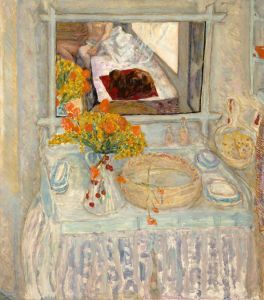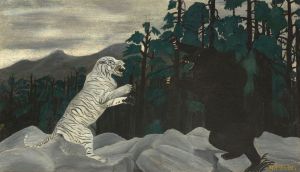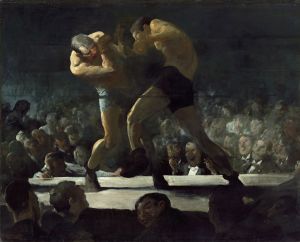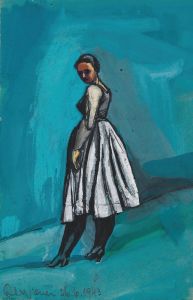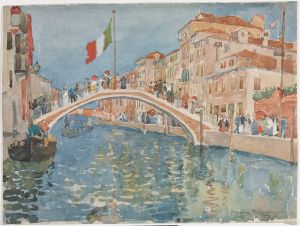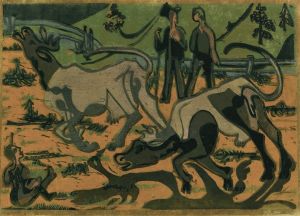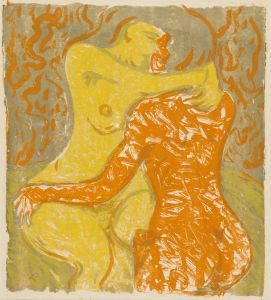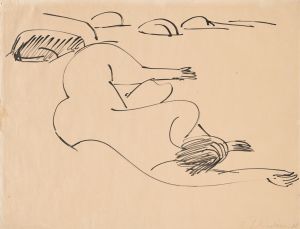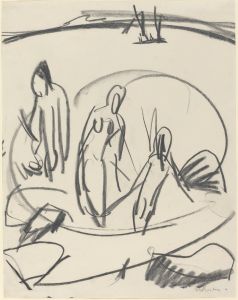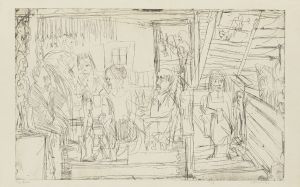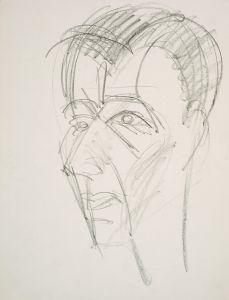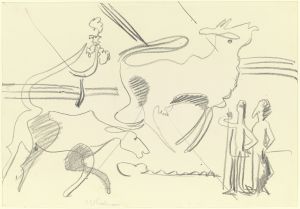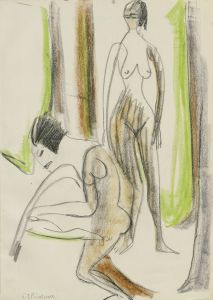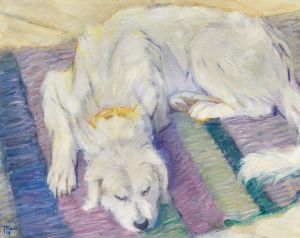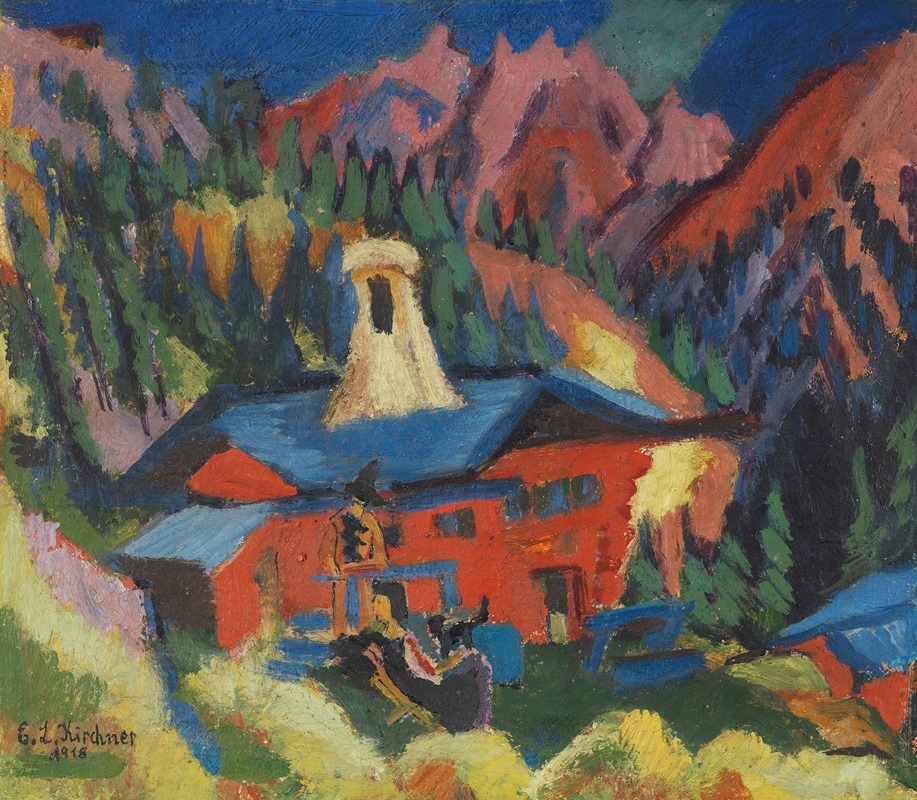
Haus auf der Staffel
A hand-painted replica of Ernst Ludwig Kirchner’s masterpiece Haus auf der Staffel, meticulously crafted by professional artists to capture the true essence of the original. Each piece is created with museum-quality canvas and rare mineral pigments, carefully painted by experienced artists with delicate brushstrokes and rich, layered colors to perfectly recreate the texture of the original artwork. Unlike machine-printed reproductions, this hand-painted version brings the painting to life, infused with the artist’s emotions and skill in every stroke. Whether for personal collection or home decoration, it instantly elevates the artistic atmosphere of any space.
Ernst Ludwig Kirchner, a prominent German expressionist painter and one of the founding members of the artist group Die Brücke, created the painting "Haus auf der Staffel" in 1918. This work is a significant example of Kirchner's mature style, which often combined vibrant colors, dynamic compositions, and a unique approach to perspective. Kirchner's art was heavily influenced by his surroundings and personal experiences, and "Haus auf der Staffel" is no exception.
The painting depicts a house located in Davos, Switzerland, where Kirchner moved in 1917 to recuperate from a nervous breakdown and the effects of his service in World War I. The Swiss landscape and architecture became a central theme in his work during this period. "Haus auf der Staffel" reflects Kirchner's fascination with the mountainous terrain and the traditional wooden structures of the region. The house in the painting is rendered with bold, expressive brushstrokes and a vivid color palette, typical of Kirchner's expressionist style.
Kirchner's time in Davos marked a period of both artistic productivity and personal struggle. The isolation and tranquility of the Swiss Alps provided him with a refuge from the turmoil of the war and the pressures of the Berlin art scene. However, his mental health remained fragile, and his work from this period often conveys a sense of tension and emotional intensity. In "Haus auf der Staffel," the angular lines and distorted forms suggest a psychological depth, reflecting Kirchner's inner turmoil and his attempt to find solace in the natural environment.
The composition of "Haus auf der Staffel" is notable for its use of perspective and spatial distortion. Kirchner often employed these techniques to convey movement and emotion, breaking away from traditional representational methods. In this painting, the house appears to tilt and shift, creating a dynamic interaction between the structure and its surroundings. This approach not only emphasizes the expressive nature of the work but also aligns with the broader goals of the expressionist movement, which sought to capture the emotional and subjective experience of the world.
Kirchner's choice of color in "Haus auf der Staffel" is particularly striking. He uses a range of bold, contrasting hues to evoke the vibrancy and energy of the landscape. The use of color is not merely decorative but serves to enhance the emotional impact of the painting. The vivid blues, greens, and yellows create a sense of vitality and movement, while the darker tones add depth and complexity.
"Haus auf der Staffel" is a testament to Kirchner's ability to transform his personal experiences into powerful visual statements. The painting is a reflection of his ongoing struggle with mental health, his response to the natural beauty of the Swiss Alps, and his commitment to the principles of expressionism. Today, Kirchner's work is celebrated for its innovative approach and its profound impact on the development of modern art. "Haus auf der Staffel" remains an important piece within his oeuvre, illustrating the enduring power of expressionist art to convey the complexities of human emotion and experience.





